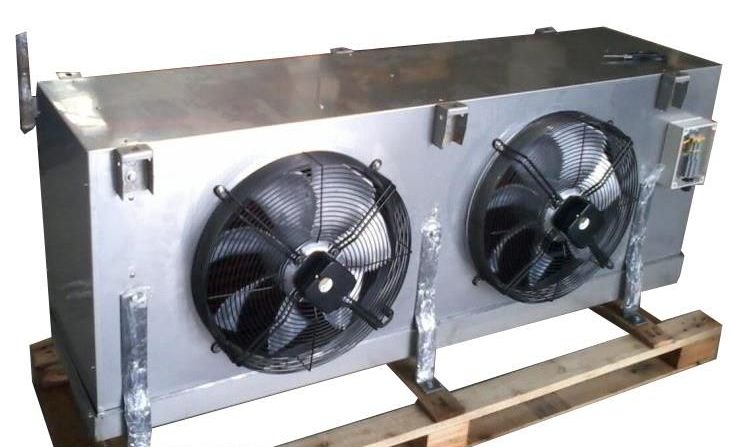Refrigeration Evaporator unit

The evaporator is the space that needs to be cooled by the refrigerant; the compressor compresses the refrigerant from the low pressure of the evaporator to the pressure at the condenser. The heat gained by the refrigerant is rejected at the condenser and the high pressure refrigerant is expanded into the low pressure evaporator by the expansion valve. This is a very general representation of the various units in a refrigeration system.
The systems generally run the refrigeration evaporator at about 0 °C and the freezer evaporator below −18 °C. The system EXV 1 with two parallel evaporators is able to continuously switch between freezer and refrigerator, which allows better performance, compared to the EXV 2 cycle.Evaporators in AC & refrigeration system cycle. The compressor compresses refrigerant, in this process it gets heat up due to increasing pressure and it gets super heated, so it has to be cooled by passing through the condenser. Condenser first de-superheats and changes its medium and then sub-cools it as per need.

Evaporator Unit
The evaporator is to receive low-pressure, low temperature fluid from the expansion valve and to bring it in close thermal contact with the load.
The refrigerant takes up its latent heat from the load and leaves the
Evaporator as a dry gas.
The function of the evaporator will be to cool gas, liquid or other
Product loads.
in most cases air or a liquid is first cooled, and this is then used to
Cool the load. e.g., in a cold-room air is cooled and this air cools the
Stored produce and carries away heat leaking through the structure;
In a water chiller, water is circulated to cool the load, etc.
Type Of evaporators:
Shell & Tube evaporators
brazed plate type evaporator
Tube Coils / Tube Bundles evaporator
manufactures blast freezers, blast chillers, hydrocoolers, Baudelot coolers, product coolers, and process room coolers for processes involving fish, meat, poultry, dairy and cheese, fruit, vegetables, and processed foods
